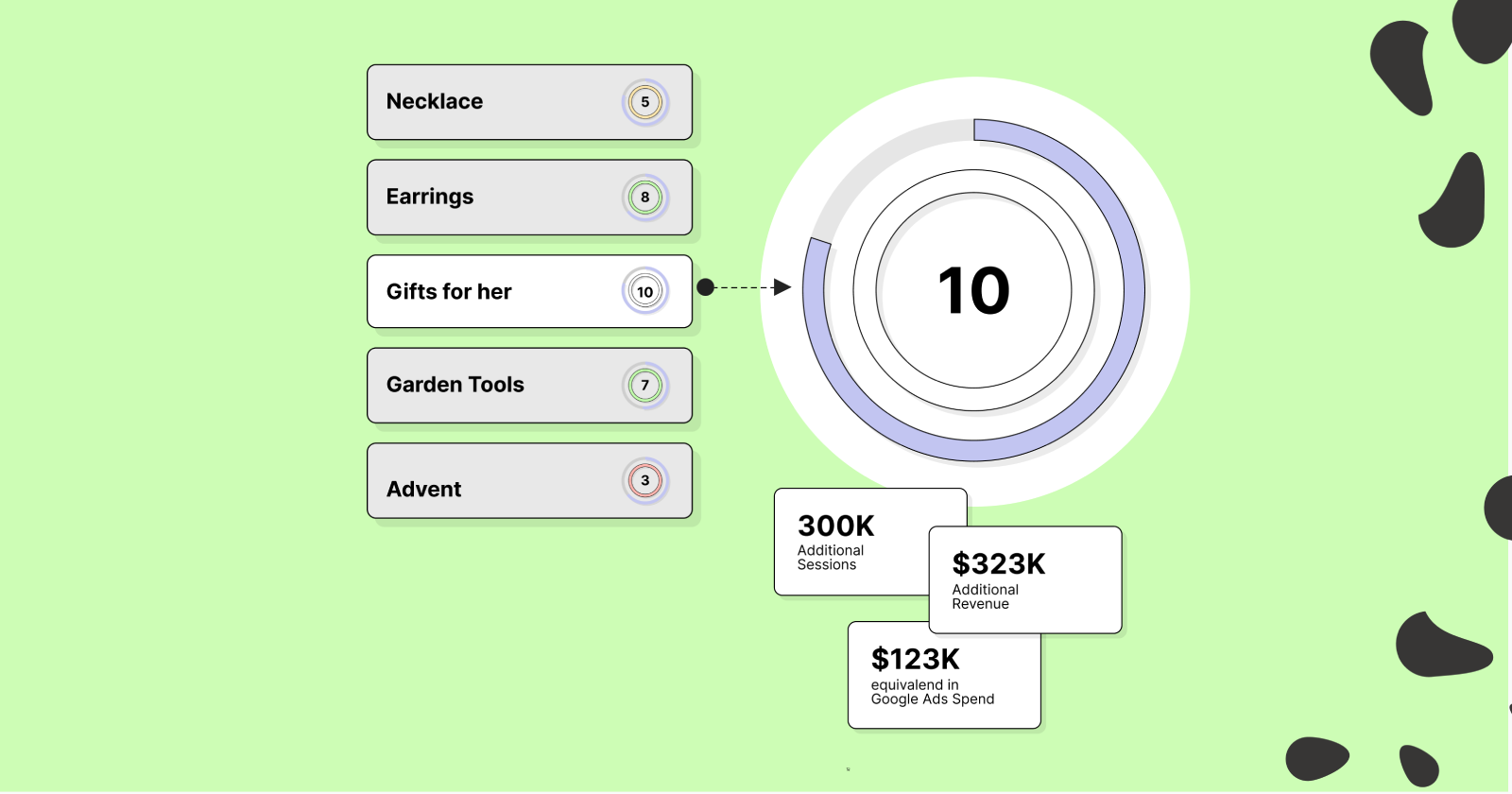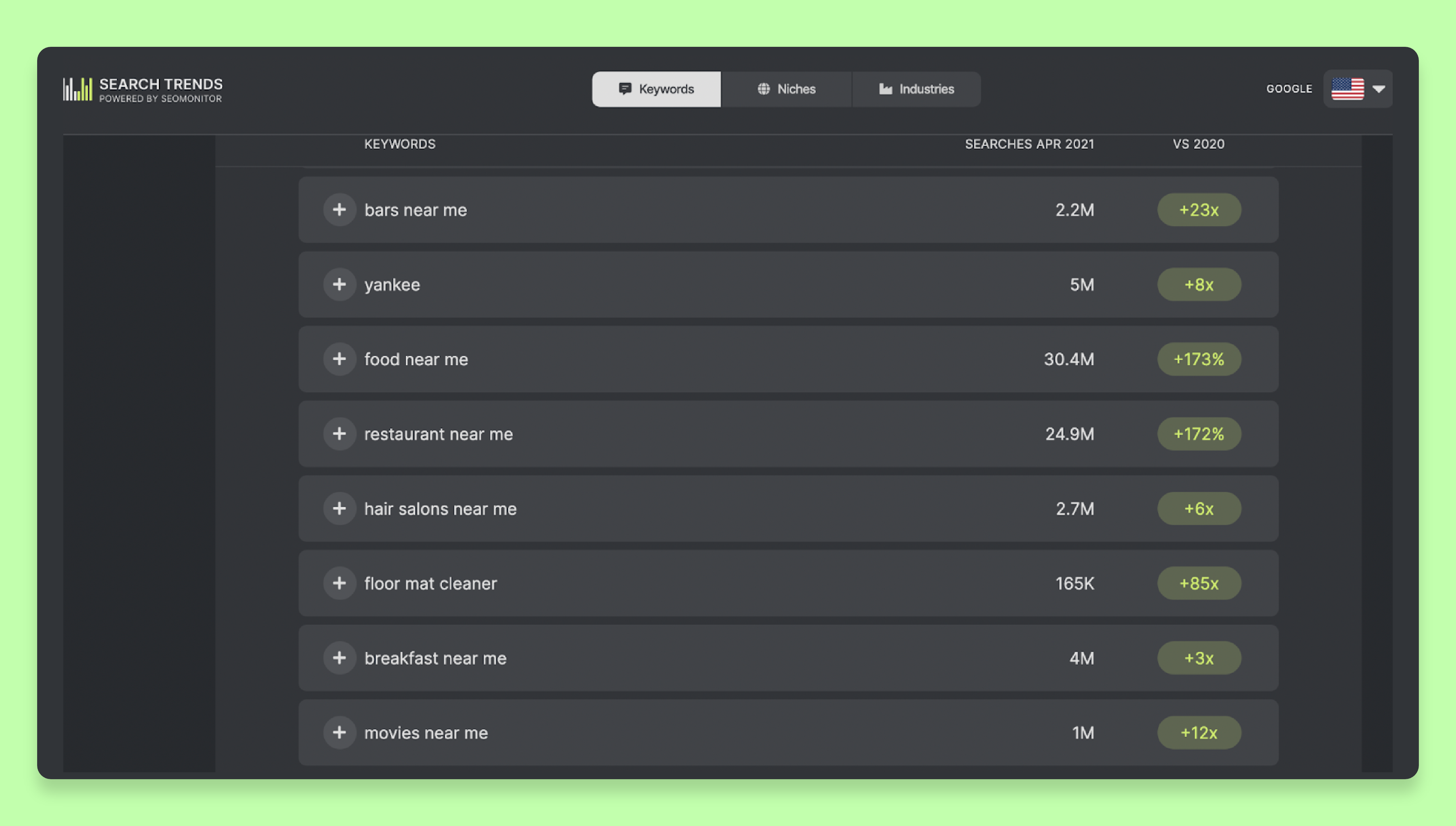What is your client’s horizon of growth?
This is the critical question your agency must answer from the start to assess the potential success of a new project.
It isn’t a question of offering the best SEO solution but solving a vital business problem through SEO and its specifics. Or, as Michael Sparkes, SEO Lead at Sparro, puts it:
“We always tackle the business problem first. Rather than the client saying they need SEO, it’s more about analyzing the underlying causes. Is it an awareness problem? Is it a demand generation problem? Do they even need SEO at this point? Etc.”
To do that, you need to:
- Understand your client’s business landscape.
- Discover the client’s industry trends, the client’s strengths, and where the opportunities lie.
We’re going to take them one by one in a bit, together with more insights from Sparro’s SEO Lead to help you structure your approach strategically.
After all, defining “where to play” with this thorough analysis will not only shed light on search opportunities but will make or break your future SEO performance.
Mapping Your Client’s Current Performance
To better grasp the client’s horizon of growth – the strengths of the current business and the emerging opportunities – you need to set a benchmark. What is the client’s status in the search landscape?
One way to evaluate that is by using the search visibility metric as a market share indicator, thus analyzing your client in comparison to its main competitors and uncovering:
- The total shares’ potential and competitors’ status.
- The room for growth in the market.
Expressed as a percentage and calculated as an impression share weighted against search volumes, the visibility metric works as a reliable benchmark for your future SEO strategy, giving you an overview of the client’s strengths and weaknesses.
For instance, let’s say your client is in a highly competitive market, and their main competitor has 70% visibility. Still, you also detected high-intent keywords that you can improve in the top 5, which means there’s a good chance of a high impact once you hit those rankings. So that goes into your strategy as a tangible goal.
This leads us to the following way of understanding your client’s digital performance – its current top-performing keywords (e.g., in top 10, top 5, top 3). The non-brand ones, as you should separate the brand ones from the get-go, not to muddle your data.
This brand / non-brand split lets you clearly define the actual SEO performance of your client (excluding effects of brand activities such as PR, advertising, etc.) and where you can move the needle with your SEO efforts.
Tackle the business problem first. It’s not just doing tactics, but constantly asking yourself what big strategic direction will move the needle for the client, Michael Sparkes, Sparro’s SEO Lead says.
Therefore, looking at the current performing non-brand keywords will give you a snapshot of the areas of the business that function well and the website categories that need improvement.
SEOmonitor helps your agency by automatically splitting the brand and non-brand keyword groups while highlighting keywords currently in the top 10, top 20, and top 100 on desktop and mobile.
We’re also developing a new automatic keyword group with the target website’s top categories, so you quickly spot the areas to focus on.
Mapping Opportunities for Growth
Now that you have a better view of the client’s status quo, it’s time to dive deeper.
Go into the particularities of the client’s audience, their customer journey, and how you can narrow your strategic focus for maximum ROI.
Look at Shifting Search Trends
“For us, looking at exploding keywords, YoY search trends, and how demand is shifting is key,” Sparkes said. “Recently with COVID, demand for some categories in the retail space was astronomical with people buying lots and lots of different things. That was an interesting consumer behavior, as you would expect people to save money due to economic uncertainty (and the behavior with toilet paper hoarding), but instead, we saw a huge increase in demand across many of our clients. Now, the question is how that consumer behavior will shift again and what’s here to stay.”
Because it’s the sort of a moving targets situation, Sparro uses Search Trends to spot exploding and tanking keywords across industries while comparing year-over-year data from two years ago to account for the pandemic anomalies.
As part of the opportunities assessment, with search trends, you can answer to “what here’s to stay” and match the search intent with your client’s offerings.
For example, if you spot a “near me” exploding trend in restaurants, salons, and museums, and your client can fill that need, you’ll know where to focus your attention and resources first:
You can also take the social listening approach to gauge even more trending topics, as Sparro does.
“We use Reddit quite a lot. We pull keywords off of that, or try and get some meaningful trends,” Sparkes said when explaining his agency’s research approach. After all, conversations in highly specialized online spaces, such as subreddits, will give you a clearer sense of the client’s buyer personas’ pain points and desires.
There’s also this problematic question that might arise: How do you proactively prepare for future business changes?
With the year-over-year data and other supporting information, you can take your agency’s role further into consultancy and paint potential avenues for the client and how their non-brand organic traffic can look in 6 or 12 months from now.
Spot the Low-Hanging Fruit
To continue optimizing your strategy for business impact, one other filter you can add to your research is understanding intent and the most relevant keywords the client’s customers use.
“For us, the intent is the first thing we’ll assess. Sometimes, people do these massive keyword grabs and do not necessarily look to see the relevance of these to the client. You can send the client a list of thousands of keywords, but what’s the end goal?” Sparkes said.
“So we pull the search results for a lot of those keywords and see who’s ranking in the top 10, how they structured their content, if we can compete with some of the more established websites in the space etc. Let’s say the client’s website is fairly new. Do we take the long-tail approach first and get some runs on the board? Do we have the right structure to rank for the targeted keywords? On the flip side, is this website super informative, and it’s going to have an easy job ranking for many keywords? Asking yourself those questions is critical, rather than just pulling a load of data and tracking it, which is meaningless,” he added.
Answering the difficult questions in a strategic approach from Day 1 will not only narrow your keyword list but will give you a better grasp of the real opportunities out there.
You can think about assessing relevant keywords by past conversion rates.
In SEOmonitor, you can find the high-converting keywords for your client and aim to optimize those, as we pull data from Google Analytics and Google Search Console and distribute the organic traffic (visits and conversions or transactions) back into keywords:
Even more, you can bring your huge keyword list, and we’ll sort it out for you, so you get only the ones where it makes sense to concentrate.
Our automatic filtering will delete low search volume keywords (
Assess Difficulty
Tactics aren’t everything. You must constantly ask yourself what big strategic direction will move the needle for the client. Sparkes adds:
“Assess what’s relevant for them and build a solution from that. We’re always going to start with keyword research to know what the opportunities are and where we currently stand, but then we need to consider what technical solutions are out in the market that make this possible to map out. So if it’s an ecommerce client, they may not have the necessary landing pages for high-intent keywords. Maybe there are quite serious technical limitations that we need to solve first for those keywords to become working opportunities for the client. And then we’ll move into the content space itself.”
Apart from technical difficulties – missing landing pages, cannibalization issues, restructuring the website, etc. – you need to look at the high-intent keywords and their difficulty.
Think about how challenging it is to get your page ranking in the top 10 results for a specific keyword, based on such things as topical authority. Does your content already target the keyword and its topic (in terms of on-page SEO)?
You can then create a keyword group with “easy” difficulty or even “easy and average” levels as your starting point. Matching difficulty with the potential additional sessions your SEO strategy can bring will help your client understand “what’s in it” for their business.
Bonus: Forecasting to Validate Your Strategic Proposal
Once you’ve mapped the opportunities across multiple variables and your client’s growth horizon is defined, at a practical level, that means you have a curated and prioritized list of highly relevant keywords (intent and conversion).
You can go one step further, as Sparro does, and input it into a forecasting model that takes into account seasonality, device split, YoY data, average CTRs, and validate your proposed strategy.
What you’ll see is the potential additional sessions and conversions you can generate for your client if those set ranking targets are achieved, plus the Google Ads equivalent value of your proposal.
This step can help you further refine the strategy and even set the proper budget for your client:
We know that each new client means a lot of energy spent on research and strategy, so we designed SEOmonitor to make your agency’s processes more efficient.
These are just a few of our agency solutions to help you focus on what matters.
Join us and our SEO agencies’ community in the journey to bring more transparency and measurability to the SEO industry.
Discover a robust rank tracker
designed just for SEO agencies
The opinions expressed in this article are the sponsor's own.









